Sony launched the FE 20mm f/1.8 G lens in early 2020, with the headline feature being the small size and weight (308g), despite being packed with features borrowed from the more expensive G Master series of lenses. With its combination of a 20mm wide-angle view and extremely wide f/1.8 aperture, there’s no doubt this lens will be popular with landscape photographers and astrophotographers.
This lens carves itself a nice niche in the lineup of available first and third-part E-mount lenses. There are no other Sony 20mm primes at all, and although there is a Sigma 20mm f/1.4, it weighs three times as much and has a bulbous front element that prevents the use of most filters. I know which one I’d rather have, despite the 2/3 of a stop aperture difference.
A commenter pointed out the Tokina Firin 20mm f/2 lens, something I wasn’t previously aware of. However, having looked into it I doubt many people would choose (or should even bother considering) that lens over the Sony 20mm. The Tokina Firin is more expensive, heavier, larger, doesn’t have weather sealing and is only f/2 compared to the f/1.8 of the Sony. The XD linear focus motors in the Sony lens, borrowed from previous G Master lenses, is also an incredible feature that lets you get the most out of Sony’s AF system. I’m willing for someone to prove me wrong, but I can’t see the Tokina keeping up with that either, and from reading a few reviews of the Firin this morning that appears to be the case when even when people were comparing them to the slower AF tech in G lenses two years ago when the Firin was first launched. Given the image quality of the Sony lens (spoiler alert: It is stellar), I can’t see one redeeming feature of the Tokina Firin when compared to the much newer Sony 20mm.
I should also mention the Tamron 20mm f/2.8 as well. This lens is 1 1/3 stops slower than the Sony, so I don’t think it will be considered by the same group of people. Optically it’s not in the same league, either. However, it is less than half the price which is considerable, and will no doubt be important to some people.
A small, ultralight 20mm prime is a great lens for the Sony lineup. Any prime lens with a wider field of view than 20mm would likely have resulted in a bulbous front element, and it’s clear that the design brief for this lens was “small and light”.
While I take some time to get to know this lens before my final review, I though I would post this gallery of images so that you can get a sense for the size, features and design of what will surely become a very popular lens in the E-mount lineup.
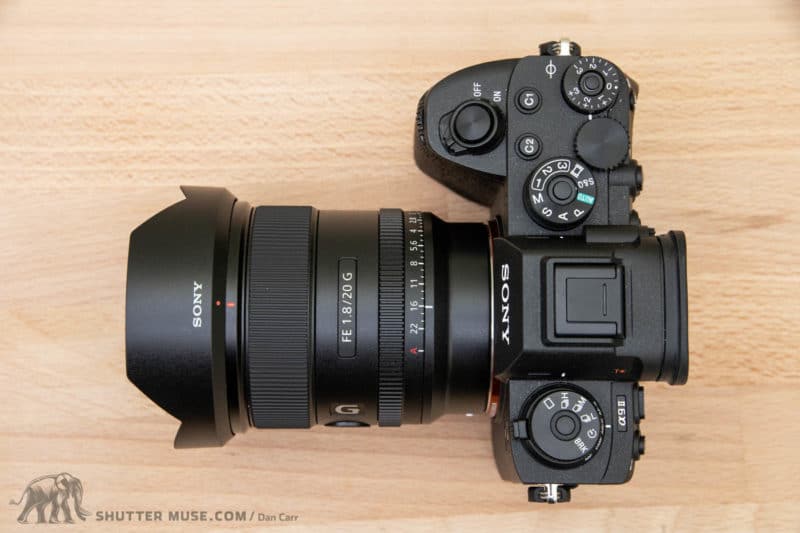
Compared to the 24mm f/1.4 GM
The 20mm f/1.8 G looks much like the more expensive 24mm f/1.4 GM, but it’s slightly lighter and a little shorter. Physical features are shared between the two, with both lenses having the same aperture ring, focus hold button, aperture de-click switch and AF/MF switch. In use, aside from the noticeably lighter weight, the other noticeable difference is the metal filter thread on the front of the 24mm GM lens, where the thread on the 20mm G lens is plastic.









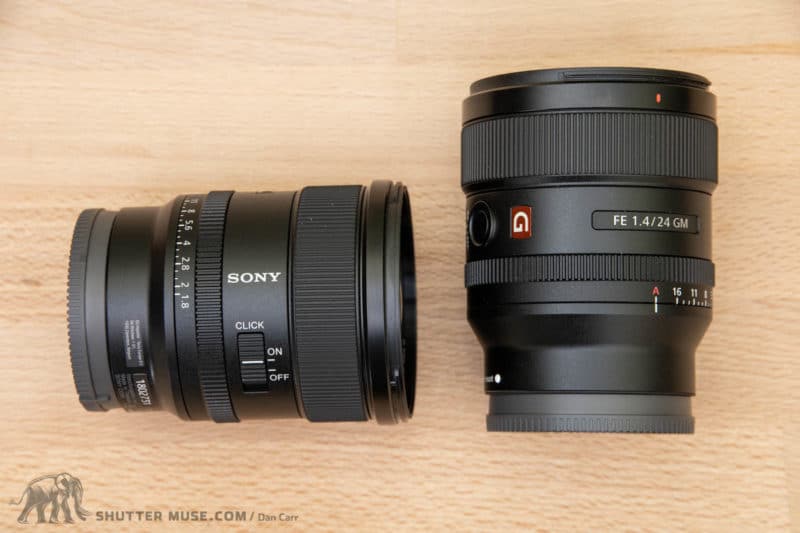
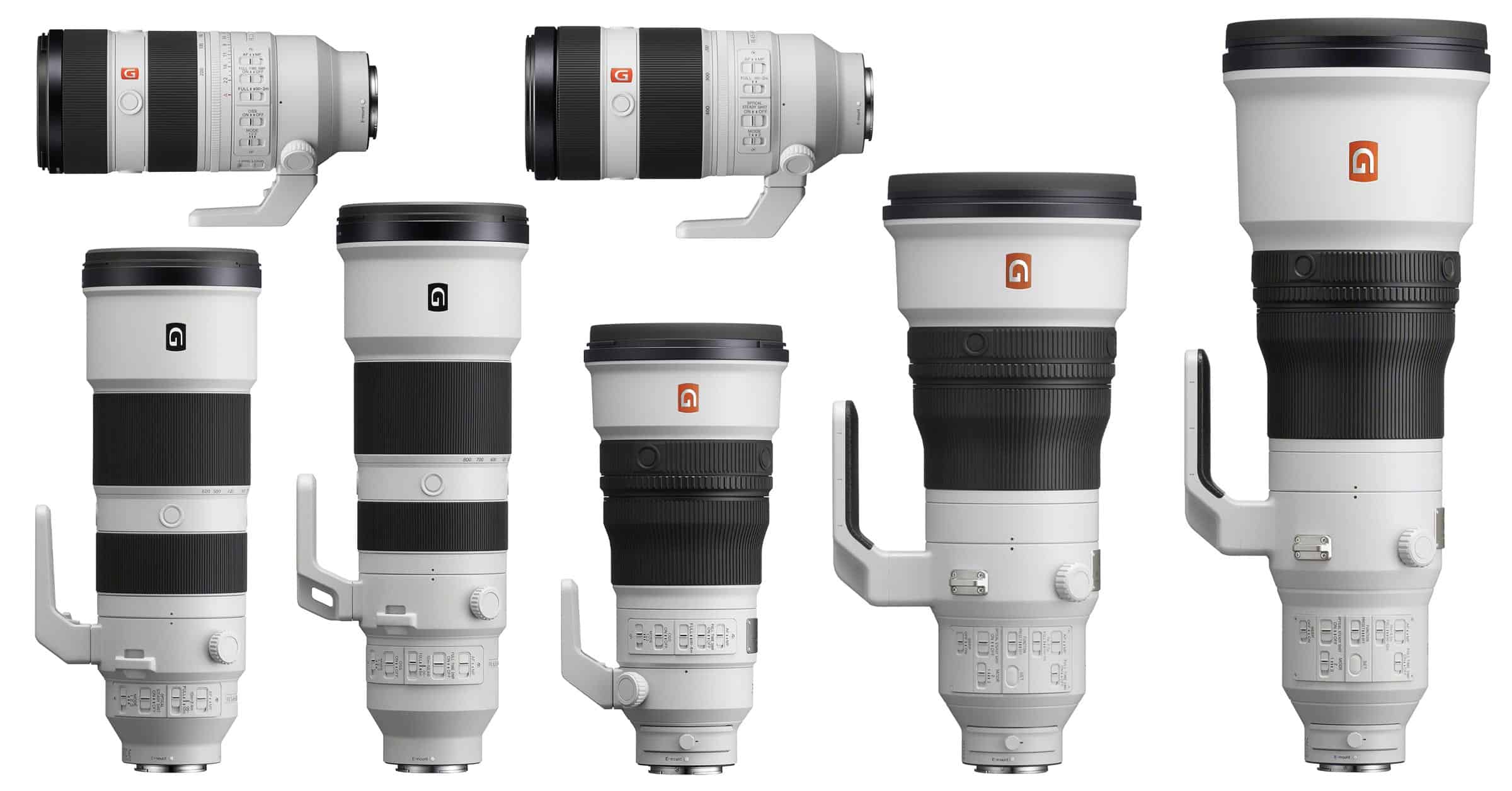

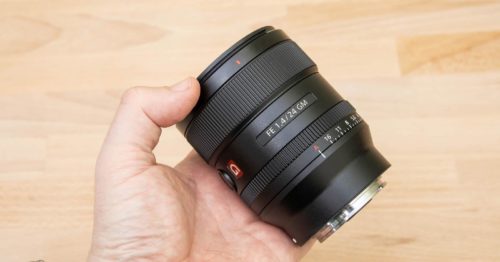



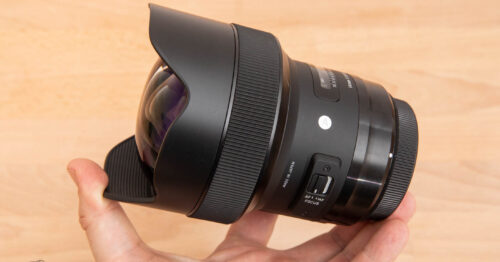
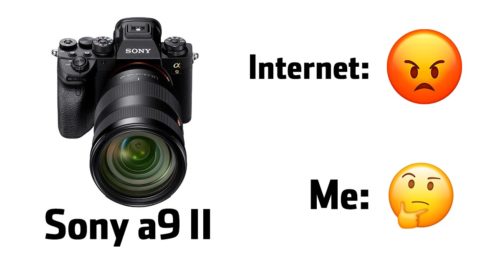
COMMENT Thanks for you gear review
Interestingly, it carves itself a nice niche in the lineup of available first and third-part E-mount lenses.There are no other Sony 20mm primes at all, and although there is a also Tokina Firmin 20mm f/2, until it weighs more 464 g, despite the 1/3 of a stop aperture difference ?
https://tokinalens.com/product/firin_20mm_f2_fe_af/
The Firin is more expensive, heavier, larger, slower and doesn’t have weather sealing. Given the choice between the two, I can’t see one reason why anyone would want to consider the Tokina. And that’s not even considering the stellar iq performance of the Sony and the insane AF speeds coming from the linear XD motors borrowed from the latest G Master lenses.
Perhaps, you could also mention the Ultra-Wide Converter SEL075 21mm f/2.8 as well ?
This dedicated ultra-wide converter for the FE 28mm F2 lens provides an even wider 21mm focal length, and because it is specifically designed for the full-frame FE 28mm F2 it delivers imposing wide perspective with high resolution throughout the image area from infinity down to the closest focusing distance, without compromising the lens’s image quality. The sophisticated design seamlessly matches the lens, and is dust and moisture resistant for maximum reliability.
https://www.sony.ca/en/electronics/converters-mount-adapters/sel075uwc
https://www.sony.ca/image/023eb336f8acbd953831f9aaa4d48fb8?fmt=pjpeg&wid=1014&hei=396&bgcolor=F1F5F9&bgc=F1F5F9
Dan, sitting in the Singapore airport waiting for our flight back to the U.S. Great article on the 20mm. I just spent three weeks in Nepal shooting with that lens in a variety of conditions including a couple of large snow storms and very, very cold weather (not Yukon cold but cold). It performed flawlessly as you’d expect. (It’s a great Astro lens).
What continues to be slightly irritating on the web are all the zealots that want to sell a Tamron or Tokina or Sigma lens in lieu of the manufacturers glass. While those are fine for folks on a budget, an image is better than no image, what is NEVER considered or talked about is 1) Having to match color and contrast among images if you are a professional. As most of the 3rd party lens pushers are not professionals they generally never think about this. Shooting a couple of Sony, Nikon, Canon lenses and mixing in other companies glass is just a recipe for headaches. If you are all Sigma or all Tokina that’s fine but mixing glass is a time consuming post production mess. 2) Resale value is not great on those lenses. While the glass might be fine the build quality is not the same as the manufacturers glass. As you pointed out with weather sealing. I assume things are a bit better now but off brand lenses, back in the day had low quality lubricants that would stiffen and even freeze in Arctic or winter conditions. In hot weather they can run and go places you don’t want to see lube. Vivitar sponsored some F1 racing for a while and they did a promotion with their glass at one race, ‘83 Italian GP, I had lube leaking out of the lenses as it was hot! So slapped the Pentax 300mm back on my LX and parked the Vivitar 70-210. Don’t know about now but there is a reason the manufacturers glass costs more. It’s not just a money grab.
Anyhoo, thanks again for a great article and best of luck during the “thaw”. Appreciate all your effort for the photo community.
Best,
Bill